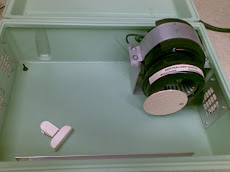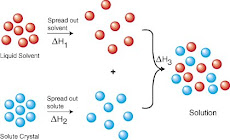Nitric Oxide
Researchers have recently determined that nitric oxide is a critical player in your body's creation of new muscle cells, and the science behind nitric oxide is surprisingly straightforward: Nitric oxide relaxes the smooth muscle cells around your blood vessels, widening the inner walls of your arteries. This process enhances nutrient and oxygen delivery to your muscles, boosting strength and endurance while working to prevent fatigue.
Unfortunately, your body doesn't create enough nitric oxide on its own to produce the results you want. That's why supplementing your body's natural supply of nitric oxide is a critical component of muscle building success. Nitric oxide supplements are used by tens of thousands of professional athletes and bodybuilders, and millions of average men.
The impact of nitric oxide cannot be understated. It's essential, and without a nitric oxide boost, your workouts are suboptimal, no matter what other steps you are taking.
What Now?
First and foremost, start eating right and working out properly. Without that foundation, nothing else you do will make a difference. Second, start taking a nitric oxide supplement daily. Doing so will allow you to transform your body in ways you have only dreamed.
There are so many nitric oxide products on the market today, and so many confusing marketing messages, it's tough to choose the right one – the one that makes the most sense for you.
Most nitric oxide supplements are similar enough that it wouldn't matter which you used, but some are notably different. Force Factor, for example, has been shown more than any other product on the market to start working immediately to increase muscle gains. It's more expensive than some of the alternatives, but it's also the most effective, so the additional cost is justified (wasting your money on cheaper products that don't work is senseless, we believe). And unlike many of its competitors, the company behind Force Factor knows what it's doing when it comes to developing phenomenal products.
sábado, 26 de febrero de 2011
CHEMISTRY AND MUSCLES
miércoles, 23 de febrero de 2011
GREEN CERTIFICATIONS
Outlining Green Certifications — Special Online Feature
Updating the latest green certifications and what they mean to HS readers
By Corinne Zudonyi, Editor
Email the HS editors
Certifications are an important aspect of a department's custodial goal. In fact, the 2010 Housekeeping Solutions survey revealed that 86 percent of readers sought out products that were green certified. Sixty-seven percent commented that green certification for workers or the department was somewhat or very important. And another 67 percent commented that green certification for the entire facility was somewhat or very important.
Even though they are important, just like general green or sustainable terms, new and revised certifications have caused some confusion among in-house managers. Here, Housekeeping Solutions defines common certifications that have caused confusion over the years to help managers stay up to speed.
SPONSOR LINKS:
Core Products Co., Inc.
Green Logic ®-Formulating green
cleaning products for our future.
CIMS–GB — Administered by ISSA, Cleaning Industry Management Standard (CIMS) is a management framework that aids in the development of departmental operations, performance systems and processes. CIMS-Green Building (CIMS-GB) is one of the standard's six areas of management best practices: Quality Systems; Service Delivery; Human Resources; Health, Safety, and Environmental Stewardship; Management Commitment; and Green Building.
"The CIMS-GB certification program can help an in-house cleaning organization achieve operational excellence and validate the importance of its services in order to secure budgetary support in the boardroom," says Plamena Todorova, account executive — Facility Service Programs at ISSA.
READ MORE:
CleanLink Articles: green, sustainable, certification
Related Topics: Green Regulations, LEED
Industry Articles: green, sustainable, certification
CIMS applies to an entire department or organization, as oppose to a single product or person and compliance with this standard can earn points or credits towards other certifications, such as LEED-EBOM. Specifics on this program can be found at www.issa.com.
CleanGredients — This is not a certification, but is still worth mentioning. This is an online database of cleaning ingredients designed to help formulators identify ingredients that have potential environmental and human health and safety benefits. It is also designed to provide the opportunity for manufacturers and producers of cleaning ingredients to showcase their ingredients with potential environmental and human health and safety benefits. Originally funded by the U.S. Environmental Protection Agency's Design for the Environment (DfE) program, CleanGredients is managed by GreenBlue. A listing of products can be found at www.cleangredients.org.
CRI Seal of Approval — The Carpet and Rug Institute's (CRI) Seal of Approval program recognizes carpet cleaning solutions and equipment that, when used properly, removes soil and stains without damaging the carpet. The program currently focuses on vacuums, extractors, deep cleaning systems and carpet chemicals. CRI's Green Label and Green Label Plus programs take this one step further by testing for and certifying low emissions from carpet, cushion and adhesives. Equipment certified by this program reduce volatile organic compounds (VOCs) and emissions and contribute to the growing use of recycled content for building materials. Additional information can be found at www.carpet-rug.org.
Design for the Environment (DfE) — The U.S. Environmental Protection Agency's DfE program labels safer products — such as cleaners and detergents — that meet the requirements of its Standard for Safer Cleaning Products and safer ingredient criteria. The DfE Standard and ingredient criteria ensure that DfE-labeled products perform well and contain the safest possible ingredients. DfE authorizes the use of its logo under a signed partnership agreement that requires notification and pre-approval of ingredient changes, partnership renewal every three years, and annual audits, including an on-site audit during the partnership period. Additional information, as well as those products recognized by DfE, can be found at www.epa.gov/dfe.
EcoLogo — Formally known as the Environmental Choice Program, this use to be Canada's eco-labeling program. Over the years, the certifying body has been embraced in the U.S. to become one of North America's largest environmental standards and certification marks. The EcoLogo Program is a Type I eco-label, which means that the program compares products/services with others in the same category (i.e. chemicals vs. other chemicals), develops rigorous and scientifically relevant criteria that reflect the entire lifecycle of the product and awards the EcoLogo to those that are verified by an independent third party as complying with the criteria.
"EcoLogo standards ensure that certified products are safer for human health and the environment by specifying criteria for: less harmful chemicals and materials; use of recycled and recyclable materials; minimizing pollution generated by the production, use and disposal of these products and their packaging; and more," says Dr. Angela Griffiths, executive director of the EcoLogo Program. "EcoLogo assesses multiple impacts throughout the life cycle of the product and addresses those that are most important."
More information can be found at www.ecologo.org.
EPA Comprehensive Procurement Guidelines — The Comprehensive Procurement Guidelines (CPG) program is part of the EPA's continuing effort to promote the use of materials recovered from solid waste. Buying recycled-content products ensures that the materials collected in recycling programs will be used again in the manufacture of new products. Additional information about the CPG program can be found here.
Green Cleaning in Schools — This is Healthy Schools Campaign's national partnership to promote green cleaning in schools. The initiative brings together the cleaning industry, educational leaders, parents and advocates to support schools in the adoption of environmentally friendly policies, practices and products.
"There are so many benefits to having a green cleaning program in place," says Mark Bishop, vice president of policy and communications. "It is about cleaning with that safest available products and most current procedures, and that we are doing things to help promote the health and safety of the staff. In turn, we are educating and keeping children healthy as well as being responsible environmental stewards."
HSC's Quick & Easy Guide to Green Cleaning in Schools helps to communicate information and resources on infection control, sustainability, green cleaning for food service, laundry care, new technologies and more. Learn more at www.healthyschoolscampaign.org/programs/gcs.
Green Seal — This is a non-profit eco-label that creates green standards for a variety of products, as well as provides product certification. Over the years the reputation of the Seal brand has grown to symbolize environmental leadership, and it continues to represent green products and services. As states continue to pass legislation that requires green cleaning practices, Green Seal product certification has become more prevalent. Many of these legislations do require the use of Green Seal certified products. An outline of all the Green Seal standards can be found at www.greenseal.org and are available for free to all interested parties.
One Green Seal standard that directly relates to this industry is GS-42, for Commercial and Institutional Cleaning Services. According to the website, this standard "establishes environmental requirements for cleaning service providers of commercial, public, and institutional buildings, including in-house and external cleaning services, to create a green cleaning program that protects human health and the environment." More information specifically pertaining to GS-42 can be found at http://www.greenseal.org/GreenBusiness/Standards.aspx?vid=ViewStandardDetail&cid=0&sid=30.
Greenguard — The goal of the Greenguard Environmental Institute (GEI) is to improve human health by enhancing indoor air quality and reducing exposure to chemicals and other pollutants. To do so, GEI certifies products and materials for low chemical emissions. Specific product certifications include: Greenguard Indoor Air Quality Certified, Greenguard Children & Schools Certified, and Greenguard Premier Certified. Only one facility certification — Greenguard Building Construction Certified — is available for new construction. More information on Greenguard and all the certifications available can be found at http://www.greenguard.org/.
LEED-EBOM — Formally LEED for Existing Buildings (LEED-EB), this certification was revamped by the U.S. Green Building Council in spring 2009 to become LEED for Existing Buildings: Operations & Maintenance (LEED-EBOM). The rating system now features streamlined reporting, fewer prerequisites, greater focus on operations and maintenance, ease of scale for use in greening large portfolios of existing buildings and more rewards for measured environmental performance.
Green cleaning, for example, is now a prerequisite for LEED-EBOM and can contribute at least six additional points to organizations seeking certification. It has been consolidated to one credit category and emphasis has been added on achieving a comprehensive green cleaning program and use of performance metrics for cleaning effectiveness.
Revisions to LEED-EBOM are again under review and updates are expected to be announced in November 2011. Up-to-date changes can be found at www.usgbc.org.
(OS1) — This is a cleaning management system that forms teams of workers, of which specialize in specific tasks. Workers are outfitted with the tools specified to complete their particular job function and tasked with conducting that individual task as part of the team. According to the ManagemMen website, developers of the program, "This simplification of the cleaning process results in a safer, healthier and easier working environment."
In addition to data tracking, benefits to the program include improved safety, reduced product and personnel waste, lower environmental impact, balanced employee workload, improved training and standards compliance.
"The tools are standard (selected by benchmarking best practices), the rules are established and scientifically validated, and with competition the various (OS1) organizations help "raise the bar" for cleaning performance," says Ben Walker, director at ManageMen. "(OS1) is the simple path for a busy in house manager to add professionalism to their program."
More information can be found at http://www.managemen.com/os1/green and training for the program is available through Janitor University.
Practice Greenhealth — This is a membership only community of institutions in the healthcare industry that have made a commitment to sustainable and/or eco-friendly practices. Members include hospitals, healthcare systems, businesses and other stakeholders engaged in the greening of healthcare to improve the health of patients, staff and the environment, according to the website. More information can be found at http://www.practicegreenhealth.org/.
Transpare — Originally referred to as the Information-Based Environmental Label (IBEL), Transpare outlines critical information regarding the environmental, safety and health attributes of cleaning products, empowering purchasers to make informed choices that are consistent with their organizational sustainability goals. Currently under development, Transpare is first being designed to address chemical products, but will soon be modified to address other major product categories, including those for which there are currently no third party eco-label programs such as microfiber, brooms and some equipment. ISSA and Ecoform will soon begin Beta testing of Transpare with an eye toward launching the system in late Summer 2011.
"Transpare will enable the user community to compare and contrast green cleaning products and select those that posses preferred environmental and safety and health attributes," says Bill Balek, director of environmental services at ISSA. "This capability is critical in today’s marketplace where there are over 2,500 certified products. While this statistic is a compliment to the industry’s progressiveness, the fact remains that at the present there is no effective way of distinguishing one certified product from another based on its environmental profile. Current eco-label certification programs do not make the underlying environmental data transparent, and as a consequence there is no way to identify, let alone select, the greenest product. Transpare will make this information transparent to purchasers, who can use it to make informed purchasing decisions."
GREEN AGAIN, IMPORTANT DEFINITIONS
FEATURES
Defining Green and Sustainability
Sorting through the green and sustainable lexicon
By Corinne Zudonyi, Editor
Email the HS editors
In 2007, 67 percent of Housekeeping Solutions readers commented that they used green cleaning products within their facility. By 2010, that number jumped to 86 percent. What's even more impressive though, only 50 percent of readers surveyed in 2007 commented that they would do whatever they could to incorporate green products into their programs. In 2010, that number shot up to 88 percent.
As green cleaning and sustainable initiatives continue to evolve and gain momentum with in-house departments, it can become difficult for managers to navigate the lexicon of changing terms.
SPONSOR LINKS:
Spartan BioBenewables
Biobased Cleaning Products
for a Sustainable Future
Core Products Co., Inc.
Green Logic ®-Formulating green
cleaning products for our future.
The federal government defines green as "products and services that reduce the health and environmental impacts as compared to other products and services used for the same purpose.” Custodial managers know that incorporating these products and methods into a green cleaning program will help improve the health and environment of a building and its occupants.
However, confusion often arises when it becomes necessary for managers to go beyond green products and define product certifications, product life cycle, greenwashing or biobased products, to name a few. Here, common terms and phrases that have caused confusion over the years are defined to help managers clarify green and sustainable best practices with confidence.
READ MORE:
CleanLink Articles: green, sustainable, health
Related Topics: Green Regulations, LEED, Products & Certifications
Industry Articles: green, sustainable, health
Refresher Course
Not all terminology associated with green and sustainability is new to custodial managers. In fact, sometimes all that's needed is a refresher course and some clarification on what they already know.
BIOBASED PRODUCTS — Defined by the U.S. Department of Agriculture as "a product that is composed, in whole or in significant part, of biological products or renewable domestic agricultural materials (including plant, animal and marine materials) or forestry materials.” Some common ingredients in biobased cleaning products include citrus, coconut, corn, lavender and parsley.
It is important to note that not all biobased products are green and not all green products are biobased. For instance, while the ingredient in a product may be naturally derived, one also has to consider the toxicity, packaging and the manufacturing process.
ENVIRONMENTALLY PREFERABLE PURCHASING — Purchasing products or services that have a lesser or reduced effect on human health and the environment when compared with competing products or services that serve the same purpose.
LEED — The U.S. Green Building Council's Leadership in Energy and Environmental Design is a rating system and certification program for facilities. Due to consistent updates made to the program, there are now nine different types of certifications available, six of which pertain to the jan/san professional — LEED for Existing Buildings: Operations & Maintenance (scheduled for revisions in 2012), LEED for Commercial Interiors, LEED for Schools, LEED for Retail, LEED for Healthcare and LEED for New Construction. Each category of certification has specific requirements outlined pertaining to custodial departments. In addition to those requirements, there are supplementary cleaning tasks that can help earn points towards certifications.
Still Causing Confusion
Although green cleaning is a concept in-house departments are accustomed to and familiar with, there is still some confusion when talking specifics. For instance, what is the difference between cleaning for health and indoor air quality? Is green really different from sustainability? These questions, as well as others, are answered in the following descriptions.
CLEANING FOR HEALTH — Some confuse this with indoor air quality, but IAQ only addresses exposure to cleaning through inhalation, which is just part of the cleaning for health concept.
"There are three routes of exposure: inhalation, ingestion and absorption through the skin,” says Steve Ashkin, president of The Ashkin Group and The Sustainability Dashboard. "Inhalation is important, but it is only one part of the equation. Cleaning for health looks at all the issues.”
The cleaning for health concept claims that cleaning has value beyond the aesthetic, and can positively impact human health and the environment by reducing exposure to chemicals, improving indoor air quality, and reducing germs that prevent disease, allergic reaction and infection for building occupants and cleaning crews. What speaks to management: the cleaning for health concept has shown to increase worker productivity and reduce absenteeism.
ECO-LABELING — An eco-label is a logo of which is affixed to a product that suggests green or sustainability. Common labels include those from EcoLogo, Green Seal, Carpet and Rug Institute or the U.S. Environmental Protection Agency, to name a few. Manufacturers might also put their own eco-labels on products, which is called self-certification.
Purchasers are advised to research eco-labels to confirm the accuracy of green claims. This is often easily done as many certifying bodies provide lists of products carrying their labels, as well as those fraudulently making claims.
GREENWASHING — TerraChoice and EcoLogo coined the formal definition for greenwashing as "the act of misleading consumers regarding the environmental practices of a company or the environmental benefits of a product or service.”
As the green initiative took off, independent third-party certifications became necessary to differentiate a green product from one with no environmental benefit. In addition to certifications, Green Guides were introduced by the Federal Trade Commission (FTC) to control and clarify the terms manufacturers used to market their products as green.
Proposed revisions to these guidelines are currently being reviewed to ensure that manufacturer environmental advertising and labeling claims comply with the law and do not mislead buyers. Changes to the agency's Green Guides include new guidance on marketers' use of product certifications and seals of approval, "renewable energy” claims, "renewable materials” claims and "carbon offset” claims. Those that do not comply are considered to be greenwashing.
According to TerraChoice, developers of the Greenwashing Report and The Seven Sins of Greenwashing, more than 95 percent of consumer products claiming to be green were found to commit at least one of the "Sins of Greenwashing.”
LIFE CYCLE — The life cycle of a product is a concept that recognizes the product's impact on the environment not only during usage, but across its entire life cycle. This includes everything from the extraction of raw materials to the manufacturing process, transportation and recycling or disposal of the product. The term cradle to grave (the cradle representing where the raw materials came from and the grave representing disposal after use, according to Ashkin) is often used in conjunction with life cycle, but should not be confused with cradle to cradle.
Cradle to cradle is used to explain a product that incorporates a sustainable life cycle, but as oppose to being disposed of, is instead recycled into or reused as a product of equal or greater quality. An example of this is taking the motor out of an old piece of floor care equipment and using it in a newer model that is then reintroduced into the workforce.
RADICAL TRANSPARENCY — This is a relatively new term used in the jan/san industry and is formally defined as "a management method where nearly all decision making is carried out publicly.” In other words, radical transparency is when manufacturers honestly and completely disclose sustainable processes and product ingredients — i.e. no secrets.
SELF-CERTIFICATION — To self-certify is when a manufacturer develops their own set of certifying criteria and a certification label that confirms achievement of that criteria. Tests are often not conducted by a third party but results and additional details such as life cycle studies and inspections of operations, are traditionally made available. Purchasing agents are encouraged to review these results when determining the product's viability for a particular cleaning program. Some experts consider this a form of greenwashing, but others comment that radical transparency will support self-certification claims.
SUSTAINABILITY — The concept of sustainability is often confused with or used in conjunction with green. The main difference, though, is that green is defined by products and/or services. Sustainability is defined as a process that "meet the needs of the present, without compromising the ability of future generations to meet their own needs.” Sustainability minimizes cleanings impact on people and the environment, but more importantly, it is a process, not a product.
For instance, a green certified paper towel (a product) often consists of recycled fibers from previously cut-down trees. A manufacturer practices sustainability (a process) by planting a new tree for each that is used in the development of that paper towel, replenishing forests for future generations.
"There is no such thing as a sustainable product,” says Ashkin. "Sustainability addresses how products are made or used. It is about the triple bottom line: environmental aspects, financial aspects and social equity.”
New/Revised Certifications
To help in-house managers navigate the green and sustainable lexicon, third-party certifiers have developed — and in some cases already revised — product, personal, departmental and facility certifications. The goal is to create standards for which the industry can use as a benchmark to drive green and sustainable cleaning initiatives forward.
Descriptions and links to additional information pertaining to these third-party certifications can be found here.
Vistas de página en total
GREEN CHEMICALS
Also the materials have to meet with toxicity and health requirements regarding inhalation, dermal and eye contact. There is also a specific list of materials that are prohibited or restricted from formulations, like ozone-depleting compounds and alkylphenol ethoxylates amongst others. Please go to http://www.greenseal.com/ for complete information on their requirements.
For information on current issues regarding green chemicals, see the blog from the Journalist Doris De Guzman, in the ICIS at: http://www.icis.com/blogs/green-chemicals/.
Certification is an important — and confusing — aspect of green cleaning. Third-party certification is available for products that meet standards set by Green Seal, EcoLogo, Energy Star, the Carpet & Rug Institute and others.
Manufacturers can also hire independent labs to determine whether a product is environmentally preferable and then place the manufacturer’s own eco-logo on the product; this is called self-certification. Finally, some manufacturers label a product with words like “sustainable,” “green,” or “earth friendly” without any third-party verification.
“The fact that there is not a single authoritative standard to go by adds to the confusion,” says Steven L. Mack M.Ed., director of buildings and grounds service for Ohio University, Athens, Ohio.
In www.happi.com of June 2008 edition, there is a report of Natural formulating markets that also emphasises the fact that registration of "green formulas" is very confused at present, due to lack of direction and unification of criteria and that some governmental instittion (in my opinion the EPA) should take part in this very important issue.










































